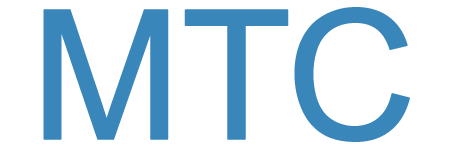There is a number of reproduction and growth hormone lab tests that should be tested to exclude possible pathologies like deficiency or excess.
Reproduction
Total Testosterone Test
Indications
Investigation of female androgen excess.
Non-indications
Screening for biochemical evidence of hypogonadism is not indicated in males without symptoms. Some symptoms of hypogonadism overlap with the normal effects of aging.
Not useful for investigation of decreased libido in females.
Not useful for monitoring females receiving androgen therapy for low libido unless overuse is suspected or unexpected virilization has developed.
Only tandem mass spectrometry is sufficiently sensitive to accurately measure the low total testosterone seen in normal females or males rendered chemically castrate for prostate carcinoma.
Sex Hormone Binding Globulin (SHBG)
Indications
Clarification of borderline high total testosterone results.
Estradiol2 (E2)
Indications
Investigation of primary ovarian insufficiency or infertility.
Investigation of primary ovarian insufficiency — where possible, the order in conjunction with FSH on day 3 of the menstrual cycle (not day 21).
Monitoring of patients receiving aromatase inhibitor therapy.
Detection of estrogen-producing neoplasms.
For monitoring of females undergoing fertility treatment.
Non-Indications
Not indicated in the investigation of male osteoporosis.
Not indicated for monitoring of men receiving testosterone therapy.
Not indicated to determine if a woman is in menopause except in those with prior hysterectomy without bilateral salpingo-oophorectomy.
Not indicated for monitoring of patients receiving ERT.
Progesterone
Indications
Investigation of infertility.
Identification of prior ovulation.
Investigation of pregnancy viability.
Non-Indications
Not indicated to determine if a woman is in menopause except in those with prior hysterectomy without bilateral salpingo-oophorectomy.
Luteinizing Hormone (LH)
Indications
Investigation of primary or secondary hypogonadism.
Investigation of infertility.
Prediction of ovulation (by LH surge).
Non-Indications
LH / FSH ratio is not recommended to identify women with PCOS but has clinical value in established cases.

Not indicated to determine if a woman is in menopause except in those with prior hysterectomy without bilateral salpingo-oophorectomy.
Follicle Stimulating Hormone (FSH)
Indications
Investigation of primary or secondary hypogonadism.
Investigation of infertility.
Investigation of primary ovarian insufficiency or infertility—where possible, the order in conjunction with E2 on day 3 of the menstrual cycle.
Non-Indications
LH / FSH ratio is not recommended to identify women with PCOS but has clinical value in established cases.
Not indicated to determine if a woman is in menopause except in those with prior hysterectomy without bilateral salpingo-oophorectomy.
Androstenedione
Indications
Not indicated in routine clinical practice.
Functions as a second–line tool in the investigation of PCOS often in specialty practice.
May be useful in monitoring therapy in patients with established CAH.
Non-Indications
Not indicated in the investigation of male hypogonadism as this is primarily an adrenal steroid.
Dehydroepiandrosterone–sulphate20 (DHEA-S)
Indications
Investigation of PCOS.
Investigation of an adrenal mass.
Non-Indications
Not useful for the investigation of male hypogonadism as this is an adrenal steroid.
17-hydroxyprogesterone (17-OHP)
Indications
For the diagnosis of non-classic CAH as a cause of hirsutism and for monitoring of CAH therapy.
Prolactin
Indications
Investigation of infertility/amenorrhea.
Investigation of galactorrhea.
Investigation for prolactinoma and other pituitary tumors.
Monitoring of prolactinoma in patients treated medically or surgically.
Non-Indications
Not useful for monitoring pregnant or lactating patients.
Growth
Growth Hormone (GH)
Indications
Used to confirm the diagnosis and to assess response to treatment in acromegaly by use of dynamic function tests.
Used to assess the pituitary ability to generate GH in dynamic function tests for hypopituitarism or pituitary growth hormone deficiency.
| Anthropometrics | Every 3-6 months: weight, BMI, Every 6-12 months: waist circumference, skin fold thickness if possible. |
| Endocrine Monitoring | IGF-1: annually and as indicated for dose titration. Thyroid function: within 3-6 months and at least annually. |
| Metabolic Monitoring | Annually: Hemoglobin A1c, fasting glucose and insulin, OGTT if high risk. |
| Obesity Related Monitoring | Annually: blood pressure, fasting lipids, consider AST and ALT. |
| Side Effects | Assess for lower extremity edema at every follow up visit. Clinically screen for signs/symptoms of sleep apnea. |
| Benefits of Therapy | Body composition assessment every 2 years. Cognitive status evaluation: condifer on individual basis. Motor function evaluation: consider on individual basis. |
Non-Indications
A random GH should not be ordered to screen for the investigation of either acromegaly or GH deficiency.
Insulin-like Growth Factor 1 (IGF1)
Indications
Used to screen for acromegaly and growth hormone deficiency in symptomatic patients.
Used for the monitoring response to treatment (surgical or medical) for acromegaly.
Used to monitor response to therapy in patients receiving recombinant GH.
Non-Indications
Should not be ordered unless there are specific symptoms of acromegaly or evidence/risk factors for hypopituitarism.
Ask any more questions you’re interested in, get in touch!

